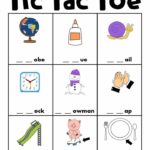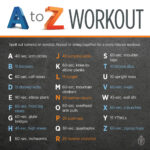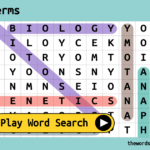Parts Of The Body That Start With T
1. Toe
2. Thigh
3. Tibia
4. Tongue
5. Tonsil
6. Trachea
7. Thorax
8. Temple
9. Testicle
10. Tear duct
11. Tympanic membrane (eardrum)
12. Temporomandibular joint (TMJ)
13. Triceps
14. Tendon
15. Tarsal bones
16. Talus (ankle bone)
17. Teeth
18. Tailbone (coccyx)
19. Thyroid gland
20. Tibialis anterior muscle
21. Torso
22. Trapezium (hand bone)
23. Trapezius muscle
24. Thumb
25. Temporal artery
26. Tenderness (referring to any body part)
27. Thoracic vertebrae (upper back bones)
28. Tricuspid valve (heart valve)
29. Thoracic duct (part of the lymphatic system)
30. Thalamus (part of the brain)
More About Parts Of The Body That Start With T
Welcome to my blog! Today, we will be exploring an intriguing topic that has often been overlooked when discussing the human body the various parts that begin with the letter “T”. Intriguing and peculiar, these body parts not only serve crucial functions but also hold unique characteristics that distinguish them from others.
Our bodies are truly remarkable creations, composed of intricate systems that work together harmoniously. From head to toe, every part plays a crucial role in ensuring our overall well-being. Although we are familiar with prominent organs such as the heart, lungs, and brain, there are many lesser-known body parts that deserve our attention.
Starting our exploration, let us dive into the world of the thyroid gland, a butterfly-shaped endocrine gland situated in the lower front of the neck. Despite its relatively small size, the thyroid gland plays a vital role in regulating the body’s metabolism, controlling energy levels, and even influencing growth and development. Dysfunction of this gland can lead to various health conditions, such as hypothyroidism or hyperthyroidism, which can result in diverse symptoms like weight changes, fatigue, or mood swings.
Moving on, let us explore another fascinating body part the trachea. Commonly known as the windpipe, this tubular structure connects the larynx (voice box) to the bronchi of the lungs. As air passes through the trachea, it splits into two bronchial tubes, which eventually supply air to the lungs. The trachea, lined by cilia and mucus-producing cells, acts as a protective pathway, filtering any potential harmful particles from reaching our delicate respiratory system.
Now, let us venture into the realm of the thorax, a region we often associate with the chest. The thorax contains several essential body parts, including the thoracic vertebrae, which provide support and protection for the spinal cord. Additionally, the thymus gland, located beneath the breastbone, plays a crucial role in immune function, producing and maturing T-lymphocytes, critical cells that contribute to our body’s defense against infections and diseases.
As we continue our journey, we encounter the tantalizing taste buds, the sensory organs responsible for our ability to taste and savor various flavors. These small, mushroom-shaped papillae are primarily found on the tongue and provide us with a delightful experience when enjoying our favorite meals. Through taste receptors located on taste buds, our brain can discern five primary taste sensations: sweet, sour, salty, bitter, and umami a savory taste often associated with proteins.
Lastly, we delve into the fascinating world of the temporomandibular joint, commonly referred to as the TMJ. This joint connects the lower jaw (mandible) to the skull, allowing us to perform crucial functions such as speaking and chewing. Although highly adaptable and flexible, the TMJ can sometimes experience dysfunction, leading to difficulties in jaw movement, discomfort, and even pain.
By shedding light on these often overlooked body parts starting with the letter “T,” we gain a deeper appreciation for the intricacies of the human form. From the lesser-known thyroid gland and trachea to the fascinating thorax and tantalizing taste buds, each body part holds significance in its own right.
Throughout this blog, we aim to provide you with thought-provoking and insightful information about these remarkable body parts. So, stay tuned for future articles where we will delve deeper into the functions, unique characteristics, and overall importance of these intriguing components of the human body. It is our hope that this exploration will not only expand your knowledge but also motivate you to take better care of these extraordinary vessels that carry us through life.
Parts Of The Body That Start With T FAQs:
Q1: What are some parts of the body that start with the letter ‘T’?
A1: Some body parts that start with ‘T’ include the tongue, tonsils, trachea, thumb, toes, thyroid gland, talus bone, tibialis anterior muscle, tarsal bones, and testicles.
Q2: What is the function of the tongue?
A2: The tongue is primarily responsible for speech, taste perception, and assisting in chewing and swallowing food.
Q3: What are tonsils?
A3: Tonsils are two small masses of tissue located at the back of the throat that help fight off infections by trapping bacteria and viruses.
Q4: What does the trachea do?
A4: The trachea, commonly known as the windpipe, serves as the airway for both breathing and speaking, connecting the larynx (voice box) to the bronchi of the lungs.
Q5: How important is the thumb?
A5: The thumb plays a crucial role in grasping objects, using tools, and performing intricate hand movements, making it an essential part of manual dexterity.
Q6: What is the function of the toes?
A6: The toes provide balance and stability while standing or walking, assisting in weight distribution and maintaining proper gait.
Q7: What does the thyroid gland do?
A7: The thyroid gland produces hormones that regulate metabolism, growth, development, and body temperature, influencing various bodily functions.
Q8: What is the talus bone?
A8: The talus bone is one of the major bones in the foot, connecting the leg with the foot, and facilitating movement of the ankle joint.
Q9: What does the tibialis anterior muscle do?
A9: The tibialis anterior muscle is located in the front of the lower leg and is responsible for dorsiflexion (lifting the foot upwards) and controlling foot movements during walking.
Q10: Where are the tarsal bones located?
A10: The tarsal bones are a group of seven bones situated in the foot between the tibia and fibula (lower leg bones) and the metatarsals (bones of the midfoot). They provide support and flexibility for foot movement.
Note: It is essential to consult a medical professional for accurate information or diagnosis.
















